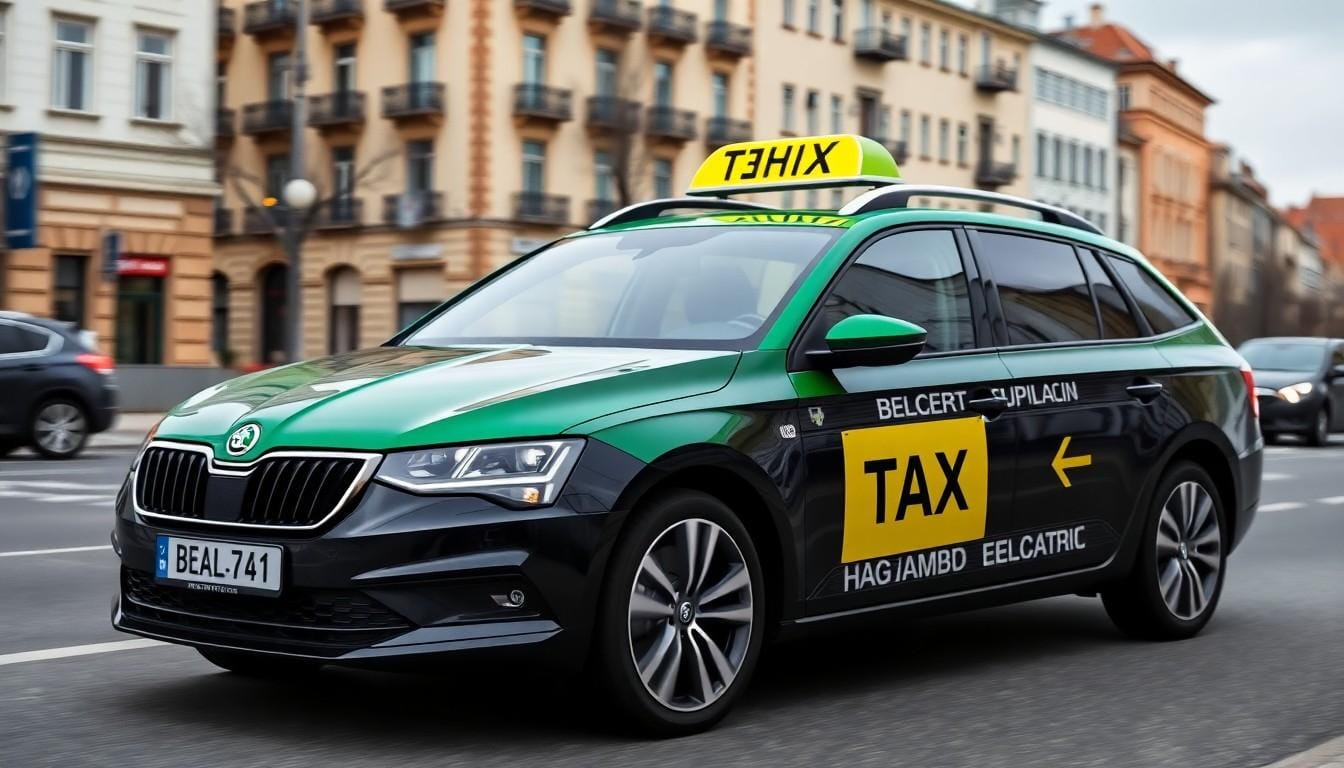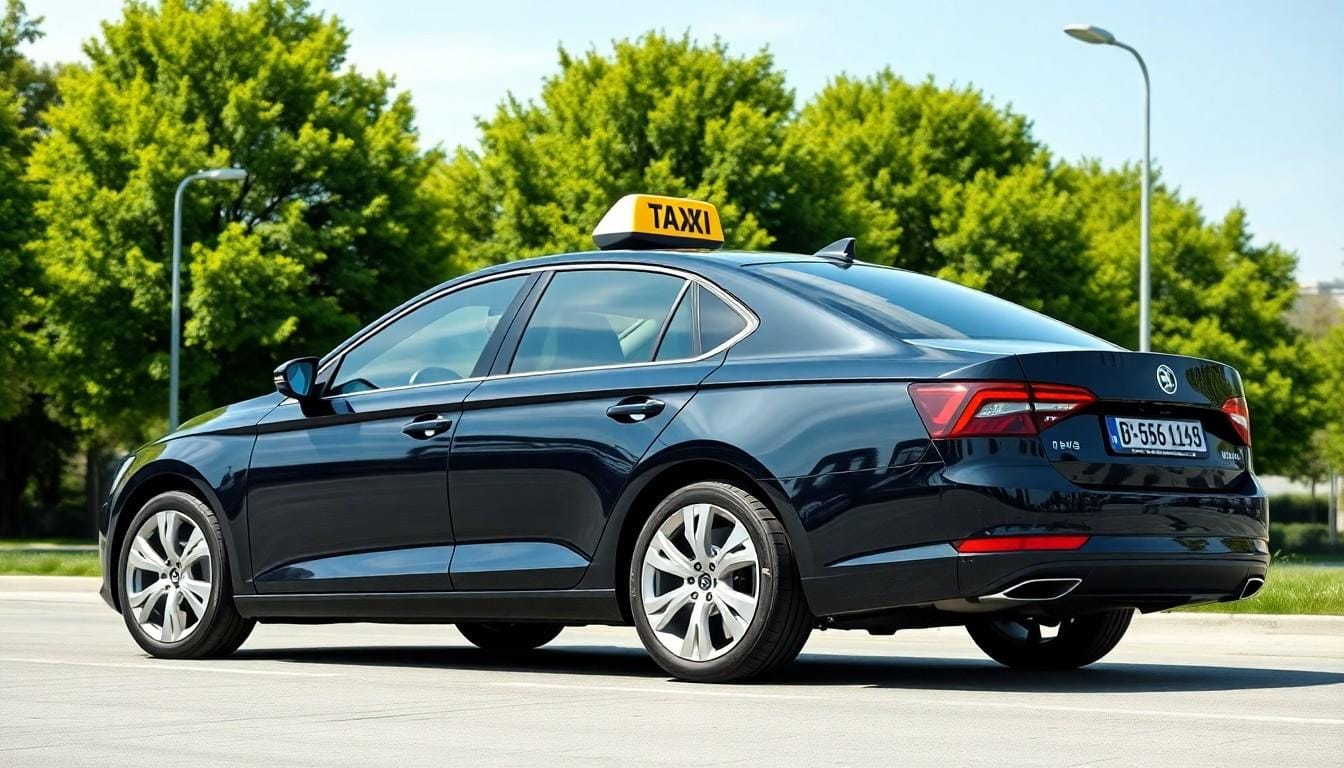
Electric taxis are becoming an increasingly popular choice in cities around the world, and Košice is no exception. These vehicles, which significantly reduce CO2 emissions, offer passengers an environmentally friendly alternative without compromising on comfort.
Electric models, such as the Nissan Leaf, not only produce lower emissions but also bring competitive prices to customers. With increasing interest in sustainability and support from government subsidies, the share of green taxis is expected to continue to grow. This provides passengers with a convenient and environmentally friendly transport option that contributes to environmental protection.
Advantages of Eco Taxis
Green taxis, especially electric vehicles, significantly reduce CO₂ emissions, with pollution levels below 50 grams per kilometre. This has a direct positive impact on the environment and air quality in cities, contributing to a healthier environment for residents.
Electric taxis also improve the quality of service. Thanks to advanced technology and a focus on comfort, passengers can rely on a comfortable and pleasant ride. In addition, eco-friendly taxis bring savings on operating costs, as there is no need for routine servicing tasks such as oil changes or oil filters.
These vehicles are also more economically viable due to their lower energy costs compared to traditional petrol and diesel vehicles. In cities where eco-taxis are proliferating, passengers can expect an increasingly better service with less impact on the environment.
Types of Eco Taxis

The growing popularity of eco taxis lies in their contribution towards sustainable mobility. These vehicles not only reduce pollutant emissions but also bring economic benefits.
Electric Taxis
Electric taxis use battery-powered electric motors, which means their operation produces no CO₂ emissions and contributes to a zero ecological footprint. Operating costs are lower than petrol vehicles as electricity is more cost-effective and maintenance is easier due to fewer moving parts. The quiet running of electric taxis brings benefits to urban areas where they minimise noise pollution for residents. Although they are not yet widespread in Slovakia, government subsidies for green vehicles are encouraging this trend.
Hybrid Taxis
Hybrid taxis use a combination of internal combustion engine and electric propulsion, which reduces fuel consumption and emissions while allowing efficient driving over longer distances. Thanks to this flexible technology, hybrid taxis are becoming increasingly popular as they provide a low environmental footprint while retaining the benefits of conventional engines. These vehicles emit less than 50 grams of CO₂ per kilometre, contributing to sustainable urban transport. In addition, the combined drive system enables better fuel economy and extends range without the need for frequent charging, thus increasing operational efficiency.
Impact on the Environment

Eco-taxis, especially electric taxis, make an important contribution to protecting the environment. These vehicles help to reduce air pollution in urban areas.
Emissions Reduction
Electric taxis do not produce direct CO₂ emissions or pollutants, which contributes significantly to reducing emissions in urban transport. The carbon dioxide level for these vehicles is below 50 grams per kilometre, which is much lower compared to traditional petrol and diesel cars. These low emissions are key to achieving sustainability goals and combating climate change, while supporting the development of green transport, which is increasingly in demand.
Green measures are on the rise in cities and electric taxis are joining the trend as sustainable alternatives. As their numbers increase, the carbon footprint of transport is expected to be further reduced, improving air quality and the health of the urban environment. The daily use of electric cars can help reduce emissions by tens of tonnes per year, keeping cities cleaner and promoting a healthier environment for their residents.
Quiet Operation
Electric taxis with electric motors enable quiet operation, which significantly reduces noise pollution in urban areas. This quieter transport contributes to a more pleasant and comfortable environment for residents and passengers, positively impacting the quality of life in cities where traffic noise often disrupts everyday life.
Quiet operation makes electric taxis an attractive option for passengers who appreciate a quieter and less distracting driving experience. This aspect supports their role in the green transformation of transport, as in addition to zero emissions, they also offer quieter operation without loss of power, ensuring comfortable and efficient travel.
Green taxis, especially electric taxis, not only contribute to improving air quality, but also have a positive impact on the urban environment through quieter operation. In this way, electric vehicles are becoming an essential part of sustainable urban infrastructure.
Passenger Experience
Passengers value eco-taxis for their environmental friendliness and reliability. Electric vehicles are celebrated for their innovative approach to sustainable transport. Apps like Hopin Taxi provide the ability to easily book eco-friendly taxis, increasing overall passenger satisfaction.
Comfort and Convenience
Electric taxis, such as the Nissan Leaf, are characterised by their quiet operation and smooth ride, which greatly enhances passenger comfort. Thanks to their quiet electric motors, the rides are less noisy, which contributes to a more pleasant transport experience. These vehicles have proven to be reliable even in challenging conditions, such as the busy streets of New York City, where their capabilities undergo intense testing.
Electric taxi drivers are often perceived as friendly and helpful, which increases the feeling of comfort and safety among passengers. Their friendliness and willingness to provide information leaves a positive impression, thus reinforcing overall client satisfaction and confidence in environmentally friendly transport solutions.
The Future of Eco Taxis
Important changes are expected in the field of green taxis that will shape the future of public transport. Electric taxis represent an important step towards a more sustainable urban infrastructure.
Technological Progress
Advances in technology are driving eco-taxis forward. Improved batteries allow longer range and faster charging, so vehicles are ready to go without long breaks. In addition, an expanded network of fast chargers makes it easier to use these taxis in cities where they are needed most. Intelligent charging systems optimise energy consumption, enabling efficient use of the electricity grid and speeding up the take-up of green taxis in everyday practice.
Fleet Expansion
Eco-taxis are gaining popularity, leading to their proliferation in urban fleets around the world. Many countries and cities are introducing stricter environmental standards that are pushing taxi companies to switch to greener vehicles such as electric taxis. Consumer interest in sustainable transport options is growing, encouraging investment in these vehicles. Large companies like Uber and Lyft have already begun integrating electric vehicles into their fleets with plans for further expansion.
Electric taxis are also operating successfully in cities such as Bratislava, where they have already contributed to reducing emissions by more than 100 tonnes. Thanks to government subsidies for the purchase of green vehicles, further growth of green fleets is expected, contributing to a reduced carbon footprint and a healthier environment in urban areas.
Conclusion
Eco-taxis are the key to a sustainable future for urban transport. Their ability to reduce emissions and offer comfortable and quiet rides makes them the ideal choice for modern cities. With increasing support from technology and infrastructure, their popularity and efficiency will continue to increase. Commuters and cities can expect to benefit from cleaner air and a better quality of life.